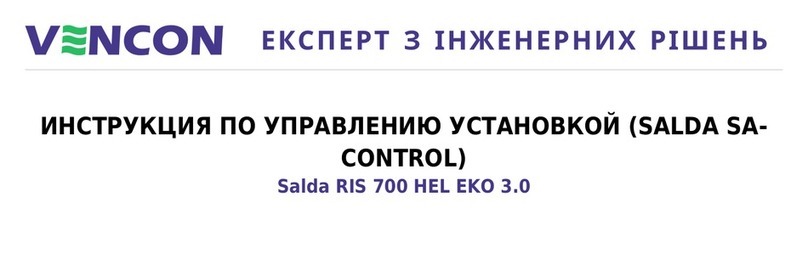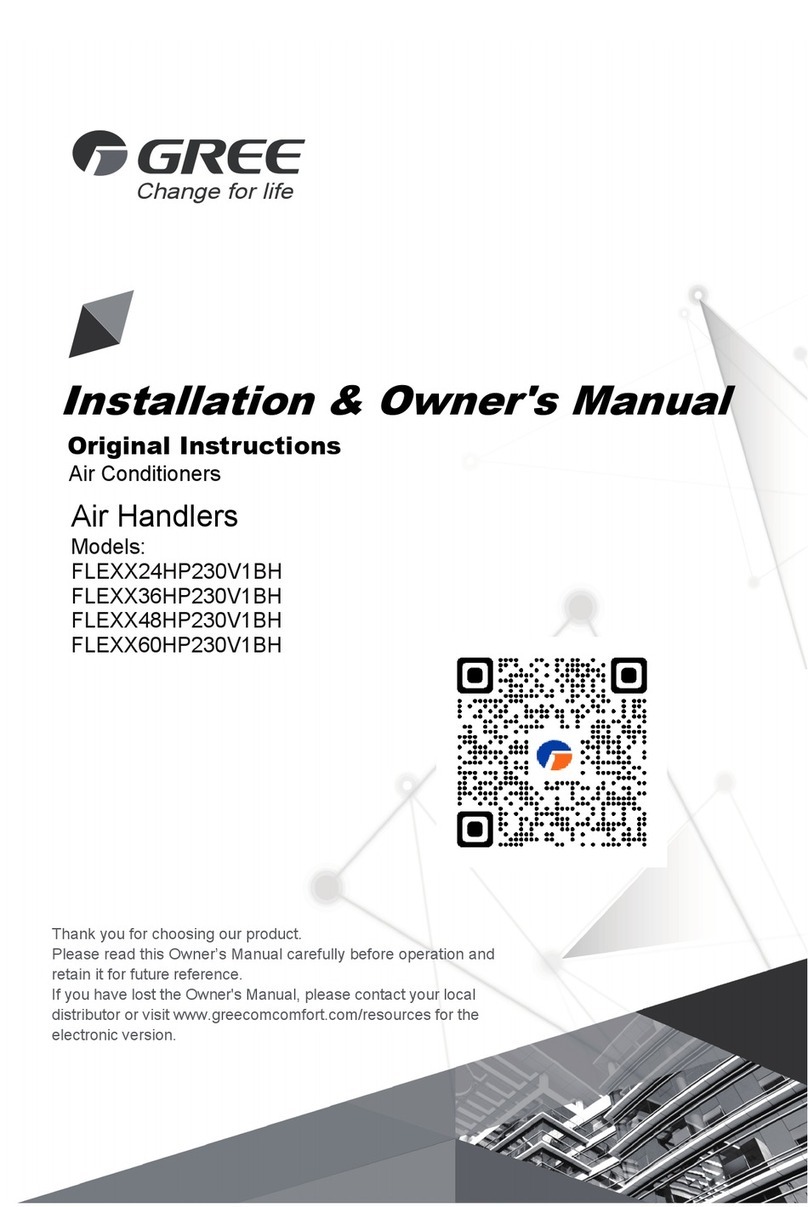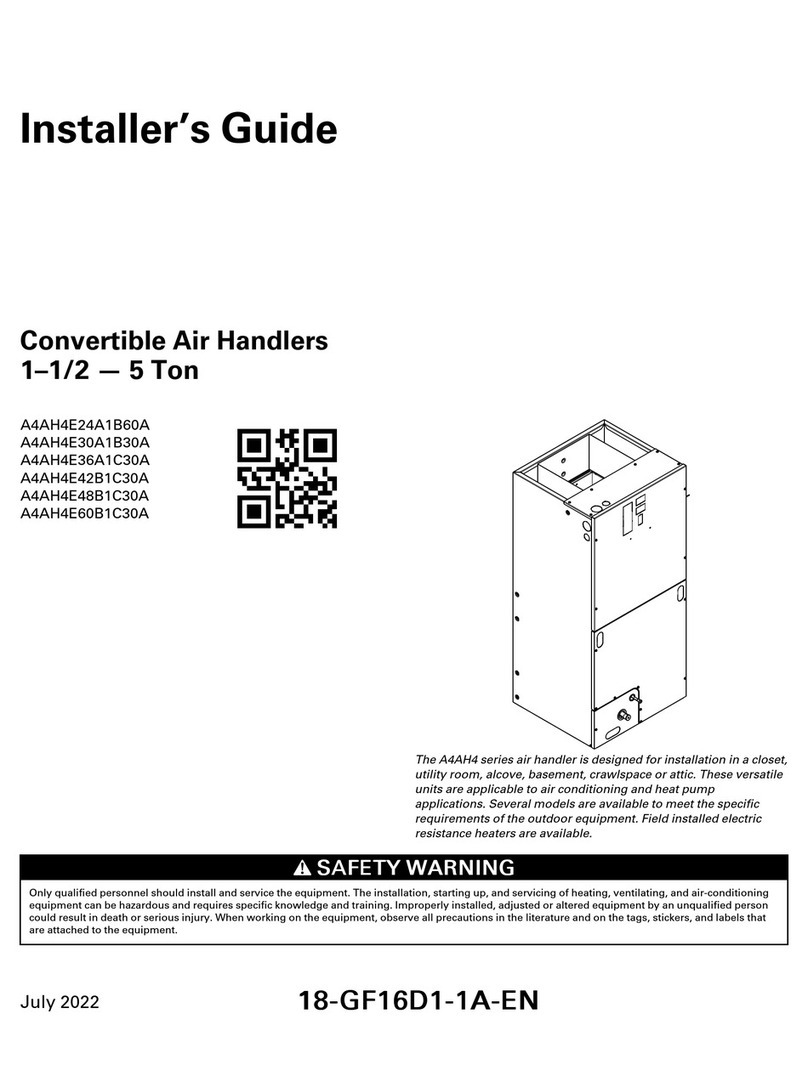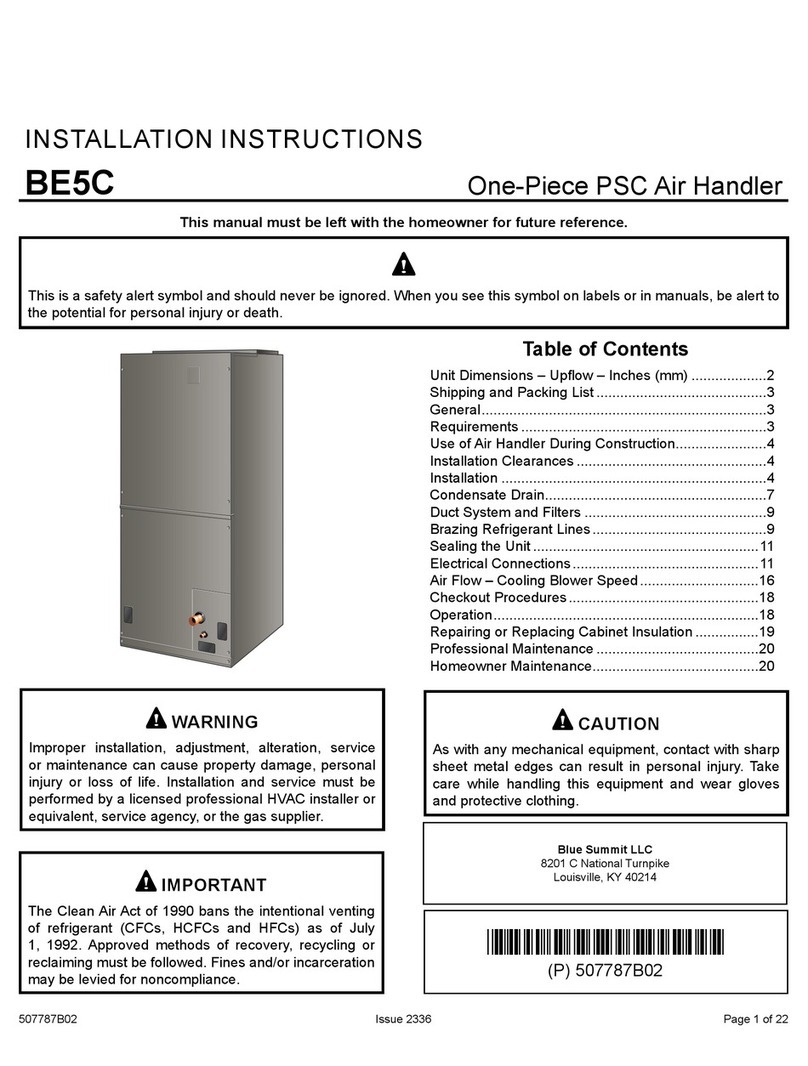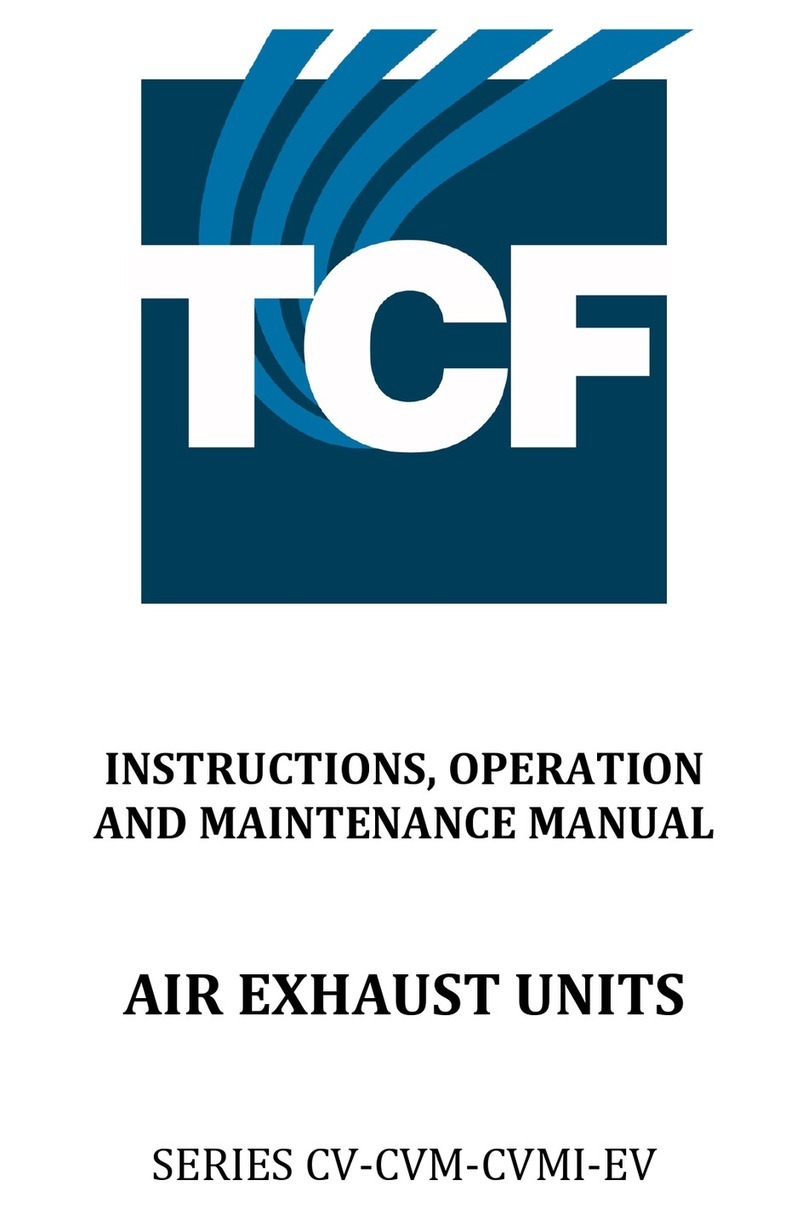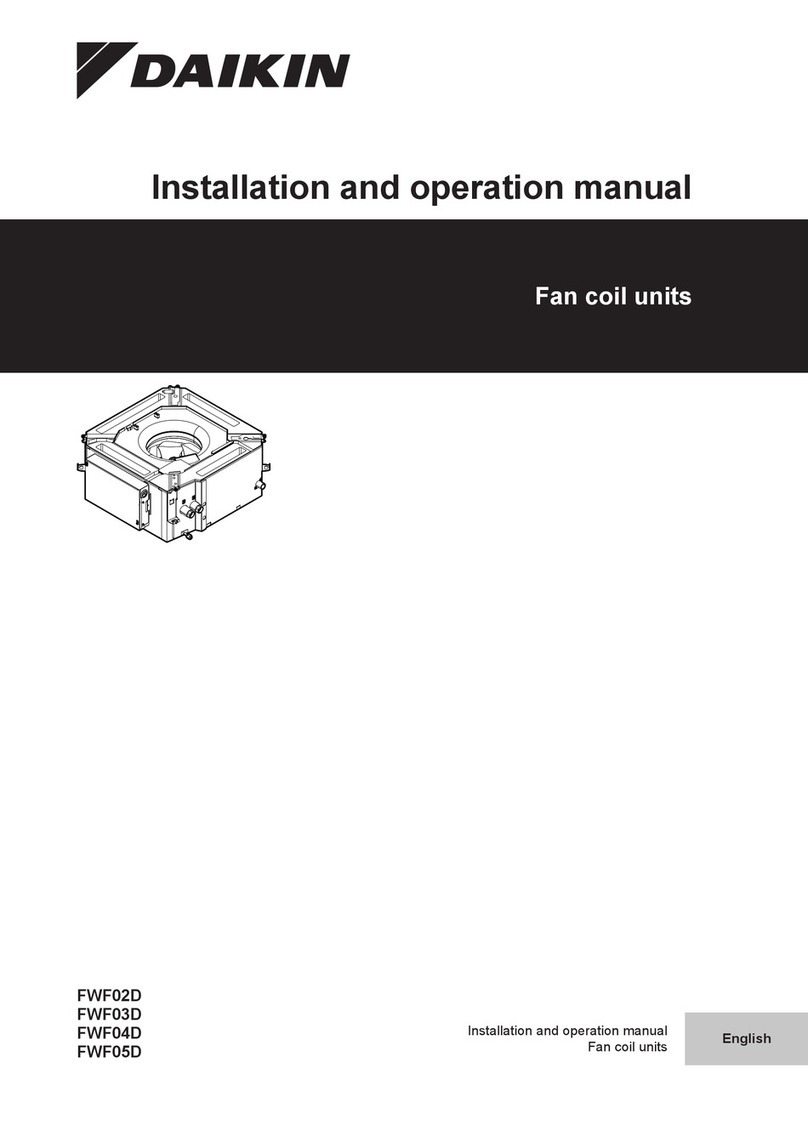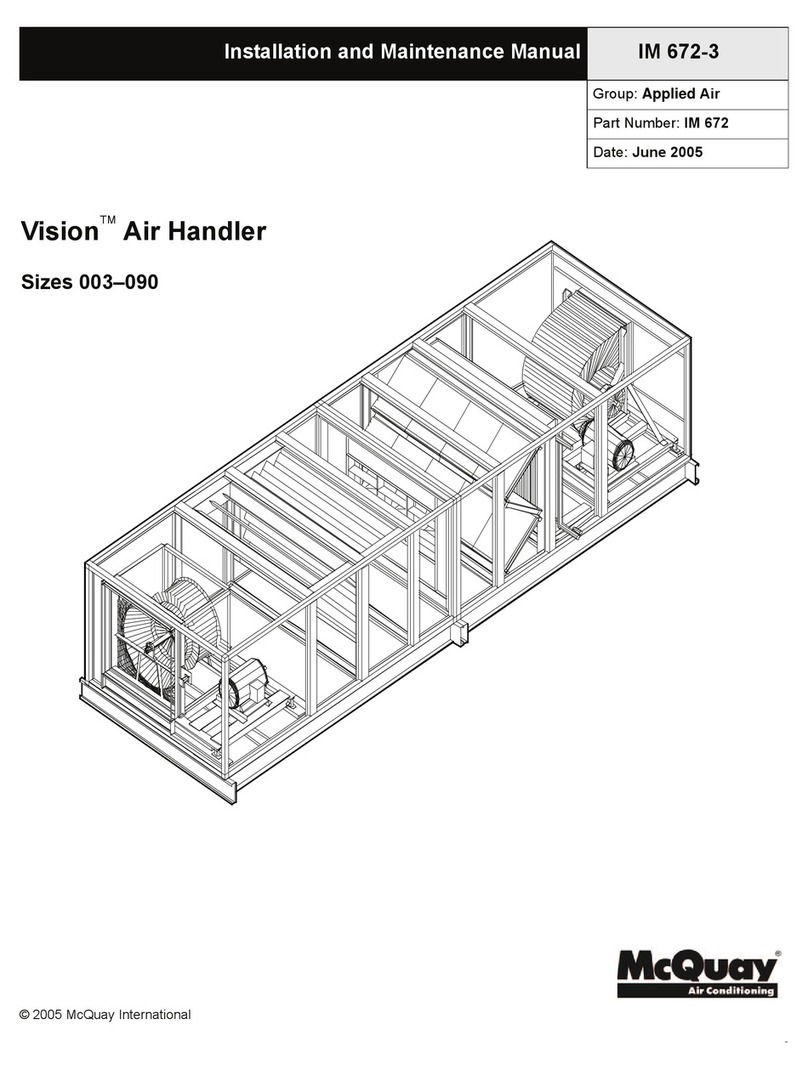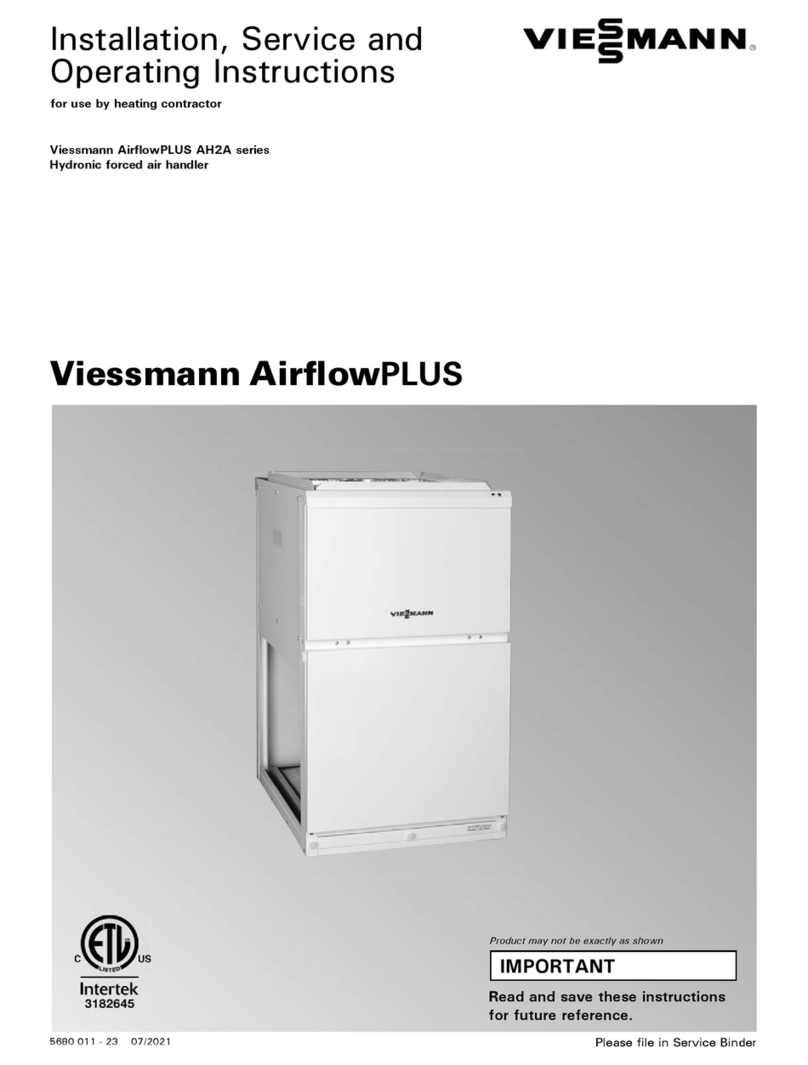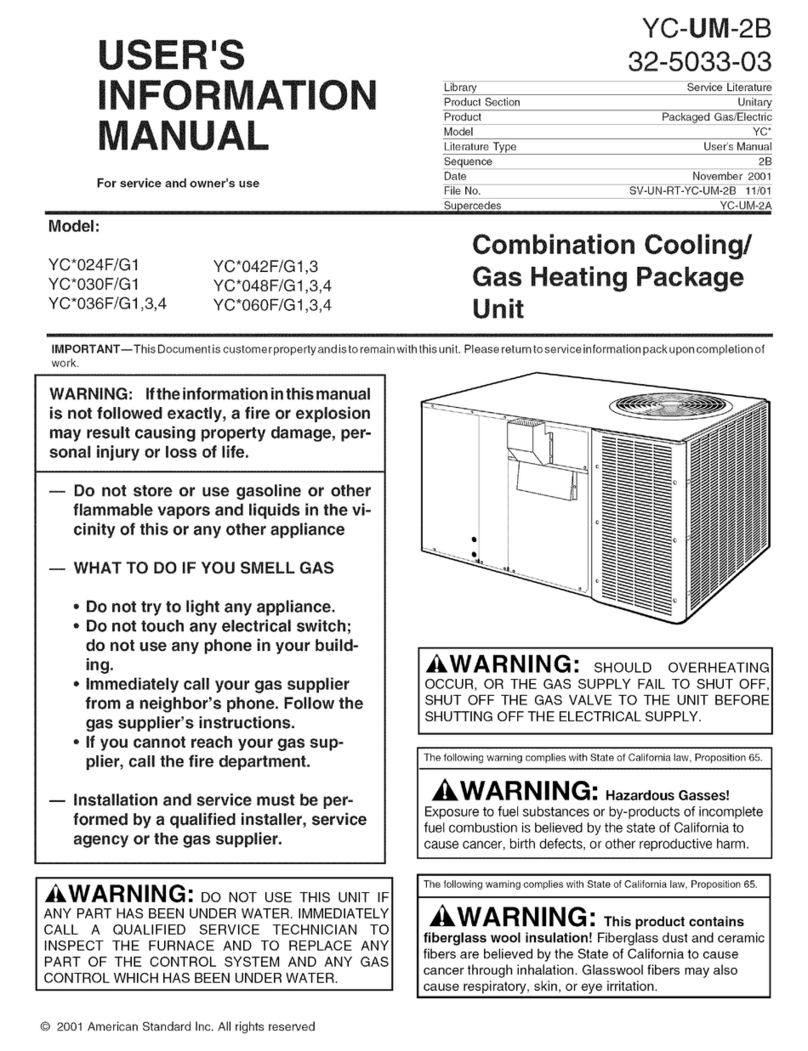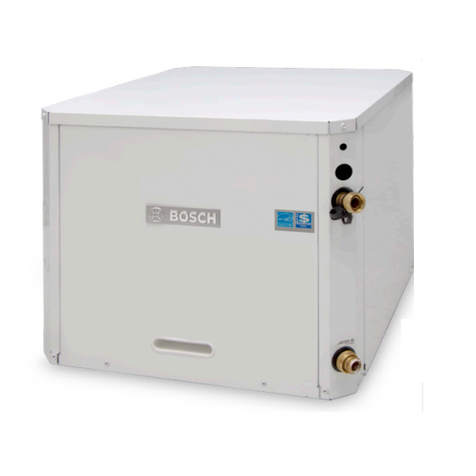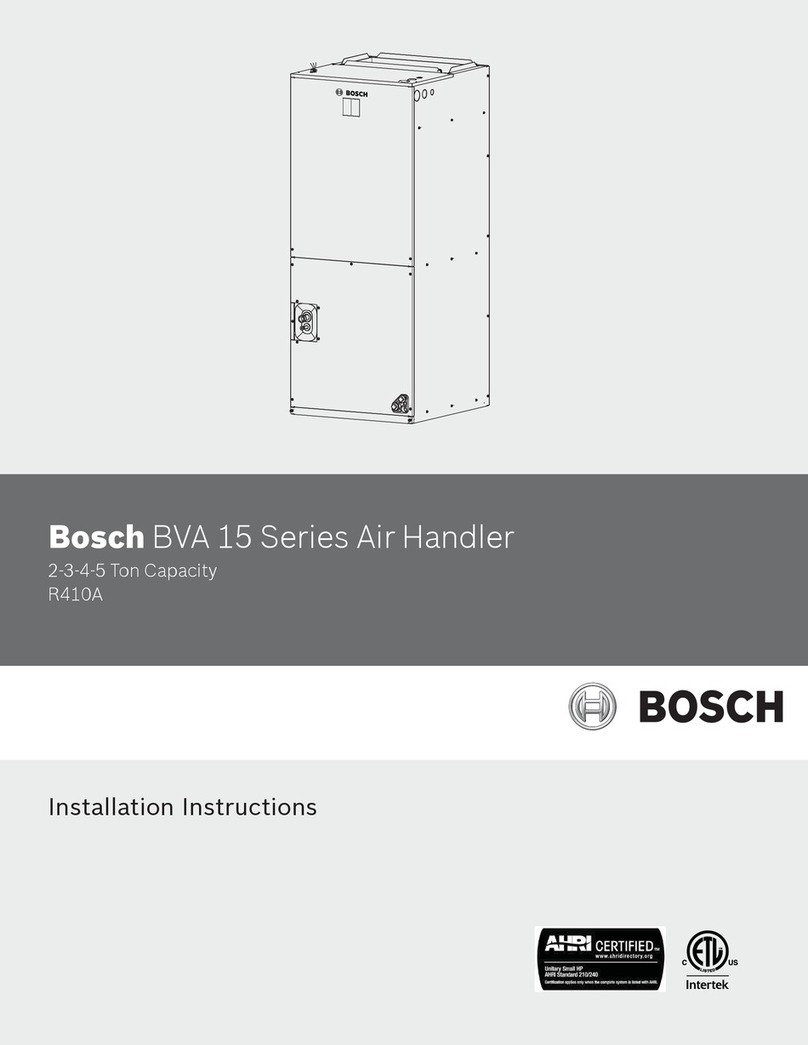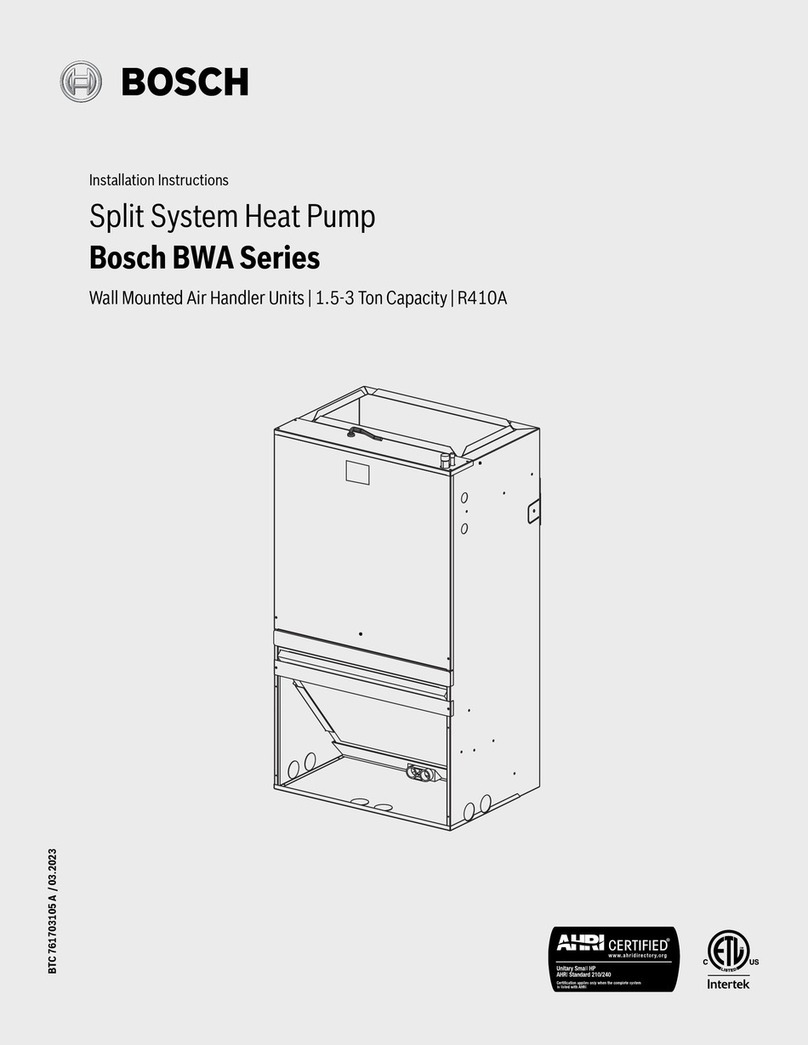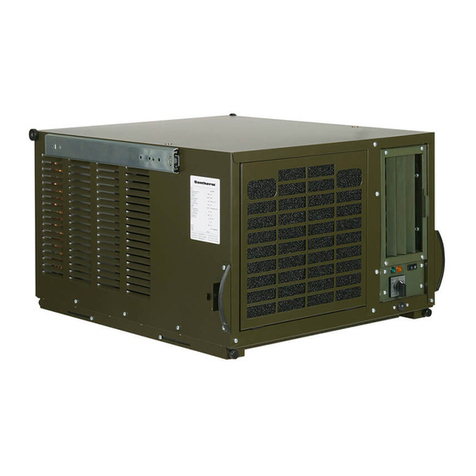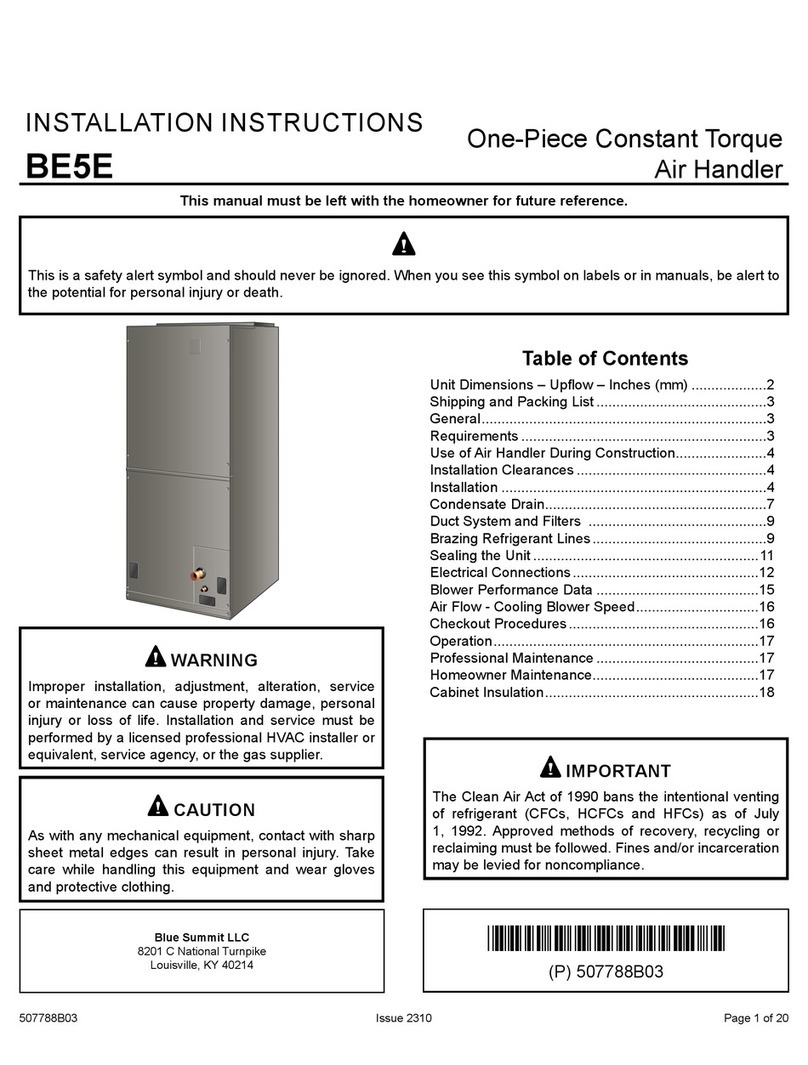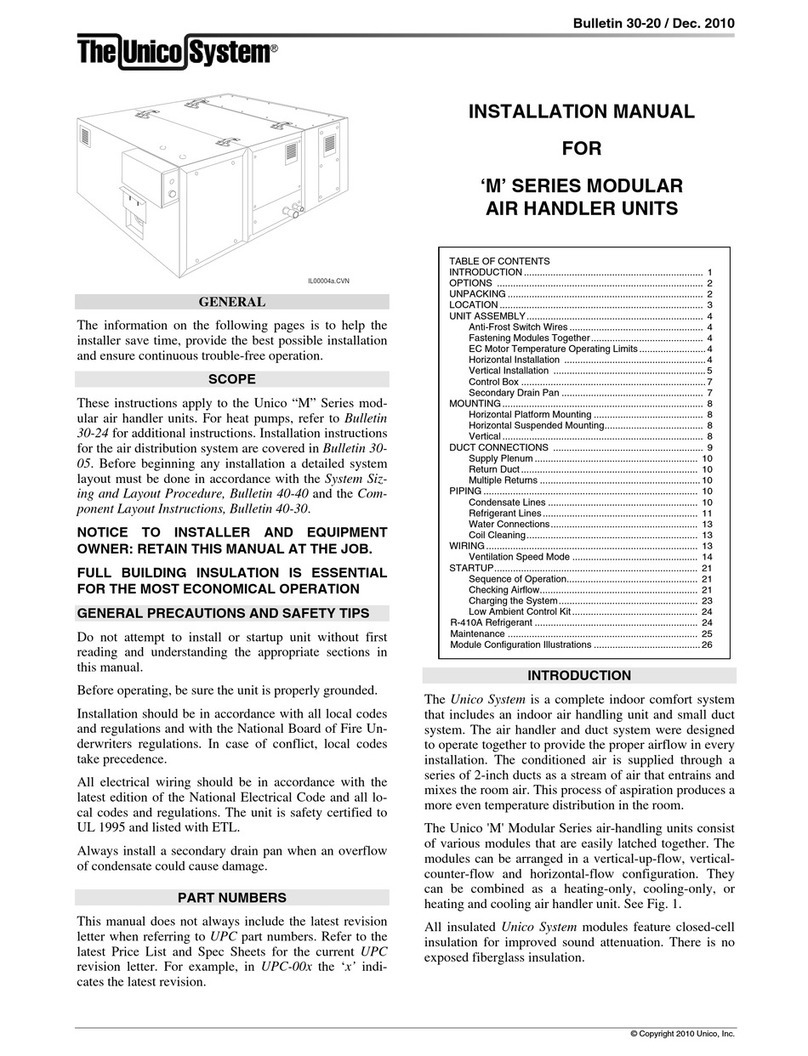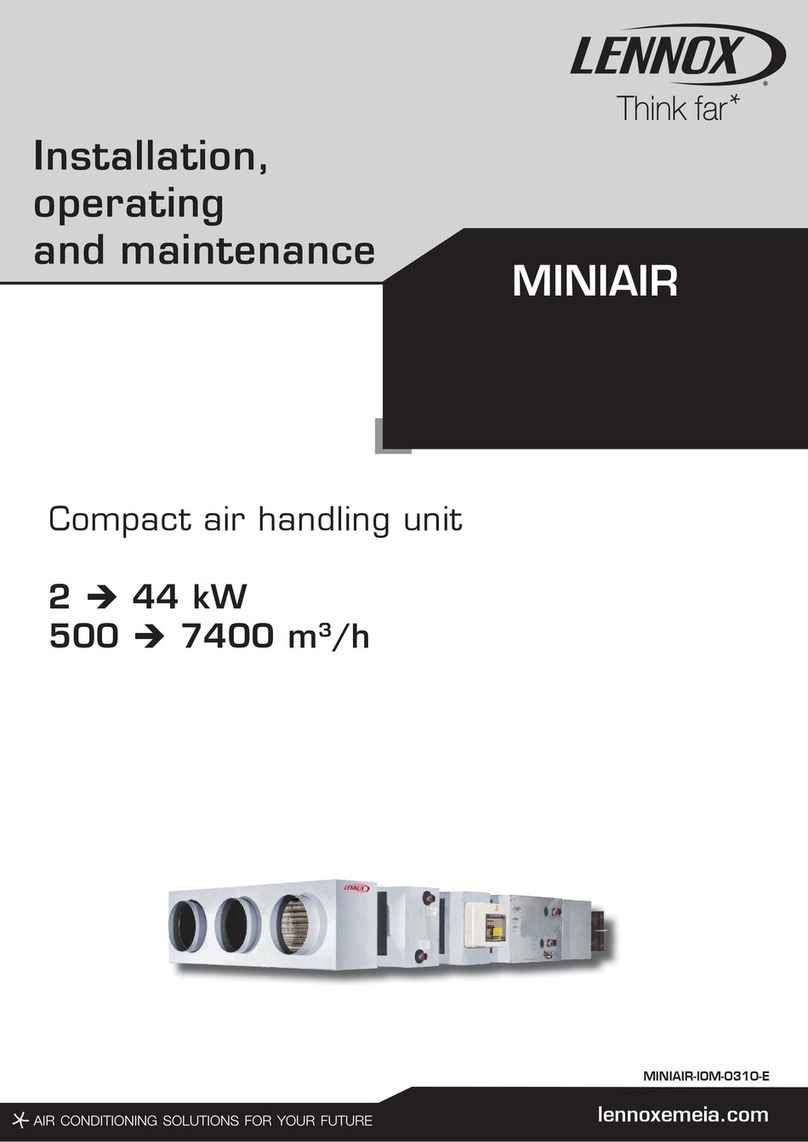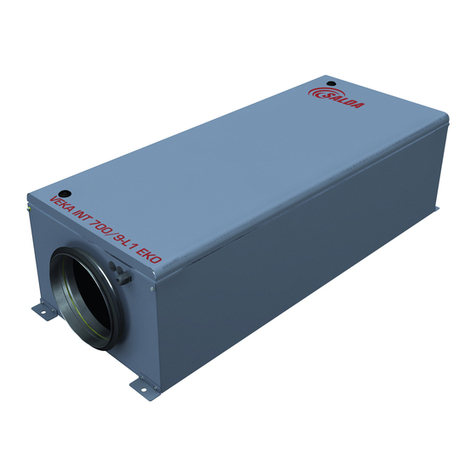
6720220327
Revised 11-11 Subject to change without prior notice
To the left of the motor control board are a row of
3 red and 4 green LED’s. These LED’s indicate the
operating status of the unit. They are labeled as
follows:
Emergency Heat On
Emergency Heat On
Auxiliary Heat On
Reversing Valve Energized, unit is in
cooling mode
Second Stage Compressor On
First Stage Compressor On
Fan On
Towards the center of the motor control board is a
single red LED labeled CFM that will blink
intermittently when the unit is running and may
icker when the unit is off. This LED indicates the
air delivery of the blower at any given time. Each
blink of the LED represent 100 CFM of air delivery
so if the LED blinks 12 times, pauses, blinks 12
times, etc. the blower is delivering 1200 CFM.
Refer to the Blower Performance Table in the
Technical Data section at the end of this manual
for factory programmed air delivery settings for
the DX and HY Series.
On the bottom right is a green LED labeled
“DEHUMIDIFY”. The dehumidify function will slow
the speed of the fan by 30% to increase the latent
capacity of the unit. In order to enable this
function, cut the resistor just below the green LED.
This operation cannot be reversed. Once you have
enabled the dehumidication function, this will be
a permanent setting.
On the right side of the motor control board are
four sets of jumper pins labeled ADJUST, PROFILE,
HEAT and COOL. The ADJUST set of pins are
labeled NORM, (+), (-) and TEST. All DX and HY
units will all be set on the NORM position from the
factory, however, airow can be increased (+) or
decreased (-) by 15% from the pre-programmed
setting by relocating the jumper in this section.
The TEST position is used to verify proper motor
operation. If a motor problem is suspected, move
the ADJUST jumper to the TEST position and
energize “G” on the thermostat connection block.
If the motor ramps up to 100% power, then the
motor itself is functioning normally. Always
remember to replace the jumper to NORM, (+) or
(-) after testing and reset the unit thermostat to
restore normal operation.
DonotsettheADJjumpertothe(-)setting
whenelectricheatersareinstalled.Doingso
maycausetheheaterstocycleontheirthermal
overloadswitches,potentiallyshorteningthe
lifeoftheswitches.
The other three sets of jumper pins are used to
select the proper program in the ECM motor for the
unit. Refer to the Blower Performance Table in the
Technical Data section at the end of this manual for
the proper jumper placement.
Alwaysdisconnectpowerbeforechanging
jumperpositionsontheinterfaceboard.
To the left of the red and green status LED’s is a row
of 1/4" male quick connects. These are used to
connect the thermostat connections and to pass
thermostat inputs on to the rest of the control circuit
in the condensing section. Remember to always turn
off unit power at the circuit breaker before attaching
or disconnecting any wiring from these connections
to avoid accidental short circuits that can damage
unit control components. Thermostat input cable is
routed through the concentric knockout on the right
side of the cabinet, into the control box. The
thermostat wires are connected to the pig tail leads
in the control box with eld supplied wire nuts.
Field connections to the low voltage leads are made
using appropriate eld supplied wiring connectors.
Consult installation instructions provided with
accessory items for specic information on control
wiring. Use 18 AWG minimum copper conductors for
control wiring up to 50’ between units. 16 AWG control
conductors are recommended for lengths between 50’
and 100’. Class 2 wiring is acceptable. Take care not to
short control leads, transformer burnout could result.
Some manufacturer’s outdoor units are equipped with
a 24 volt control transformer. If this type of outdoor




















